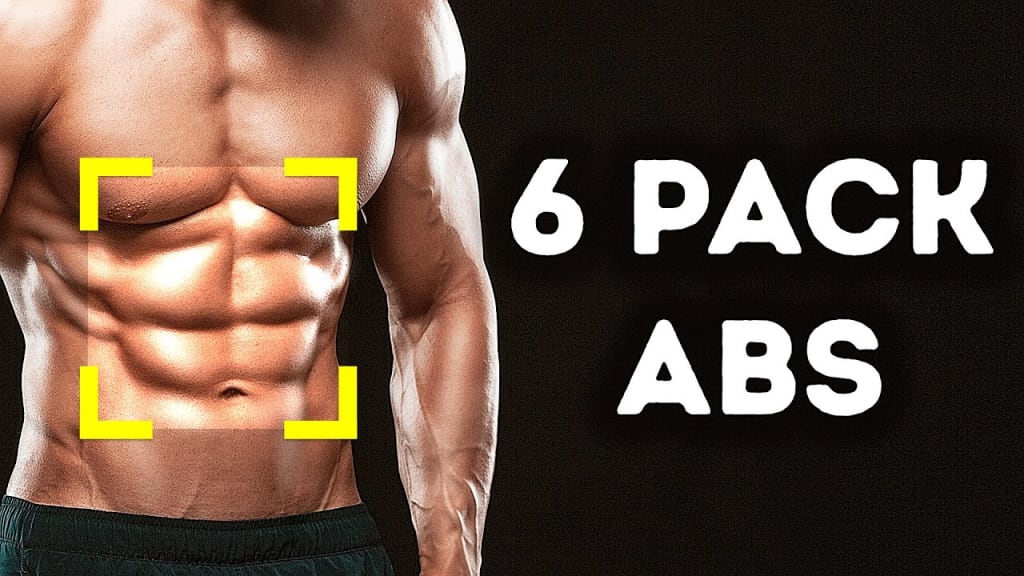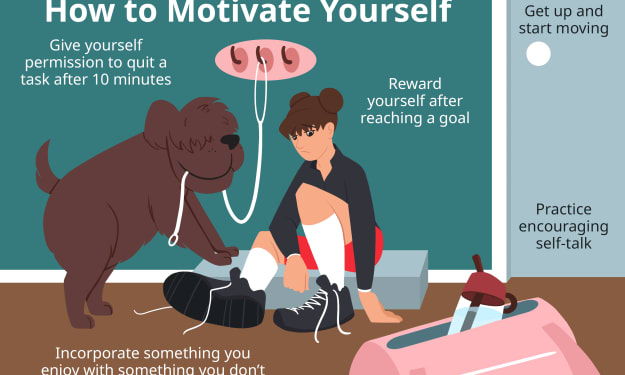Content warning
This story may contain sensitive material or discuss topics that some readers may find distressing. Reader discretion is advised. The views and opinions expressed in this story are those of the author and do not necessarily reflect the official policy or position of Vocal.
how to make six pack in 1 month
MAKE SIX PACK ABS IN 2 MONTH

In the quest for a chiseled physique, one area that many people strive to improve is their abdominal muscles. The iconic six-pack has become synonymous with fitness and strength. While it is important to acknowledge that achieving visible abs requires dedication, hard work, and patience, it is indeed possible to make significant progress within a month. This article aims to guide you through a comprehensive plan that encompasses exercise, nutrition, and lifestyle adjustments to help you embark on the journey towards your dream of a six-pack.
Section 1: Building the Foundation (Word Count: 500)
Set Clear Goals: Define your specific objectives, be it reducing body fat percentage or gaining overall core strength. Set a realistic target for achieving a six-pack within one month.
Calorie Control: Create a caloric deficit by adjusting your diet to consume fewer calories than your body requires. Aim for a moderate reduction, around 500-750 calories per day, to encourage fat loss.
Balanced Nutrition: Focus on a balanced diet comprising lean proteins, complex carbohydrates, healthy fats, and an abundance of fruits and vegetables. Avoid processed foods, refined sugars, and excessive sodium.
Section 2: Effective Workout Routine (Word Count: 900)
Resistance Training: Incorporate strength training exercises that target the entire core, including crunches, planks, leg raises, Russian twists, and bicycle crunches. Perform 2-3 sets of each exercise, with 10-15 repetitions, 3-4 times a week.
High-Intensity Interval Training (HIIT): Engage in HIIT workouts, alternating between intense bursts of exercise and short recovery periods. Include exercises like burpees, mountain climbers, sprints, and jump squats to maximize calorie burn and boost metabolism.
Cardiovascular Exercise: Include moderate-intensity cardio exercises such as jogging, cycling, swimming, or rowing for at least 150 minutes per week to aid overall fat loss.
Abdominal Cardio: Perform specialized exercises like planks, mountain climbers, and flutter kicks to engage the core muscles while simultaneously elevating your heart rate.
Section 3: Lifestyle Adjustments (Word Count: 800)
Get Sufficient Rest: Ensure you get adequate sleep, as it plays a vital role in muscle recovery, hormone regulation, and overall well-being. Aim for 7-9 hours of quality sleep every night.
Stay Hydrated: Drink plenty of water throughout the day to maintain hydration, support metabolism, and promote digestion.
Stress Management: High levels of stress can lead to increased cortisol production, which may hinder your progress. Incorporate stress management techniques like meditation, deep breathing exercises, or engaging in activities you enjoy.
Reduce Alcohol Consumption: Alcohol consumption can hinder fat loss and disrupt your sleep patterns. Limit your alcohol intake or avoid it altogether during this month.
Conclusion (Word Count: 250)
While achieving a well-defined six-pack within a month may not be feasible for everyone, following this comprehensive plan can undoubtedly help you make significant progress towards your goal. Remember, consistency and discipline are key. Embrace the holistic approach of combining proper nutrition, targeted workouts, and lifestyle adjustments to achieve the best results. Celebrate every milestone along the way, and enjoy the journey towards a stronger, healthier, and more sculpted midsection.
Achieving six-pack abs involves not only a consistent workout routine but also a well-balanced diet that supports fat loss and promotes muscle development. Here is a sample diet plan to help you on your journey towards a six-pack:
1. Prioritize Lean Protein:
- Include lean protein sources such as chicken breast, turkey, lean cuts of beef, fish, eggs, and plant-based proteins like tofu and legumes.
- Aim for approximately 1 gram of protein per pound of body weight to support muscle growth and repair.
2. Emphasize Whole Grains and Complex Carbohydrates:
- Choose whole grains like brown rice, quinoa, oats, and whole wheat bread over refined grains.
- Incorporate complex carbohydrates such as sweet potatoes, beans, lentils, and vegetables, which provide sustained energy and essential nutrients.
3. Healthy Fats in Moderation:
- Include sources of healthy fats like avocados, nuts, seeds, olive oil, and fatty fish such as salmon or mackerel.
- Limit saturated fats found in high-fat meats, full-fat dairy products, and processed snacks.
4. Load Up on Fibrous Vegetables:
- Consume a variety of fibrous vegetables like broccoli, spinach, kale, bell peppers, cauliflower, and Brussels sprouts.
- These low-calorie, high-fiber foods aid digestion, provide essential nutrients, and help you feel fuller for longer.
5. Stay Hydrated:
- Drink plenty of water throughout the day to support metabolism, digestion, and overall health.
- Limit sugary beverages, including sodas and juices, as they add unnecessary calories.
6. Portion Control:
- Pay attention to portion sizes to avoid overeating.
- Use smaller plates and bowls to help control serving sizes and prevent mindless eating.
7. Eat Regularly and Mindfully:
- Aim for five to six smaller meals or snacks throughout the day to keep your metabolism active.
- Practice mindful eating by eating slowly, savoring each bite, and paying attention to your body's hunger and fullness cues.
8. Limit Processed Foods and Added Sugars:
- Minimize your consumption of processed foods, fast food, sugary snacks, and desserts.
- Be mindful of hidden sugars in sauces, dressings, and packaged foods.
9. Pre and Post-Workout Nutrition:
- Consume a small meal or snack containing both carbohydrates and protein before your workout to fuel your body.
- After exercise, have
About the Creator
Enjoyed the story? Support the Creator.
Subscribe for free to receive all their stories in your feed. You could also pledge your support or give them a one-off tip, letting them know you appreciate their work.





Comments
There are no comments for this story
Be the first to respond and start the conversation.